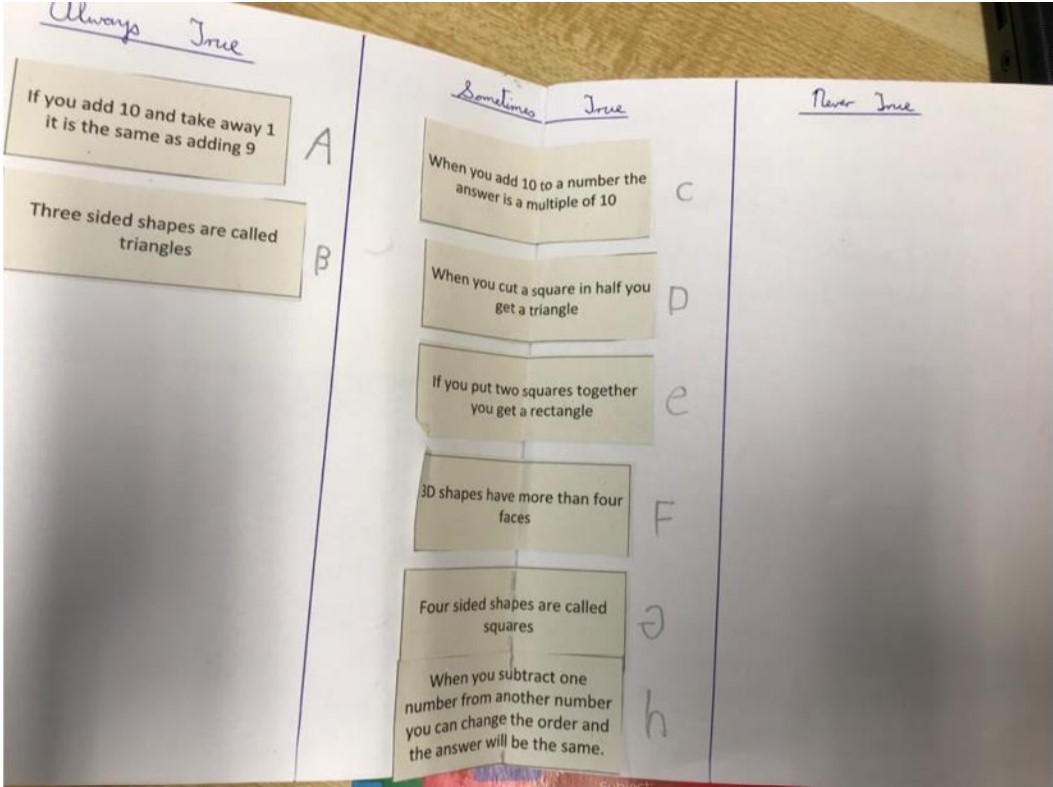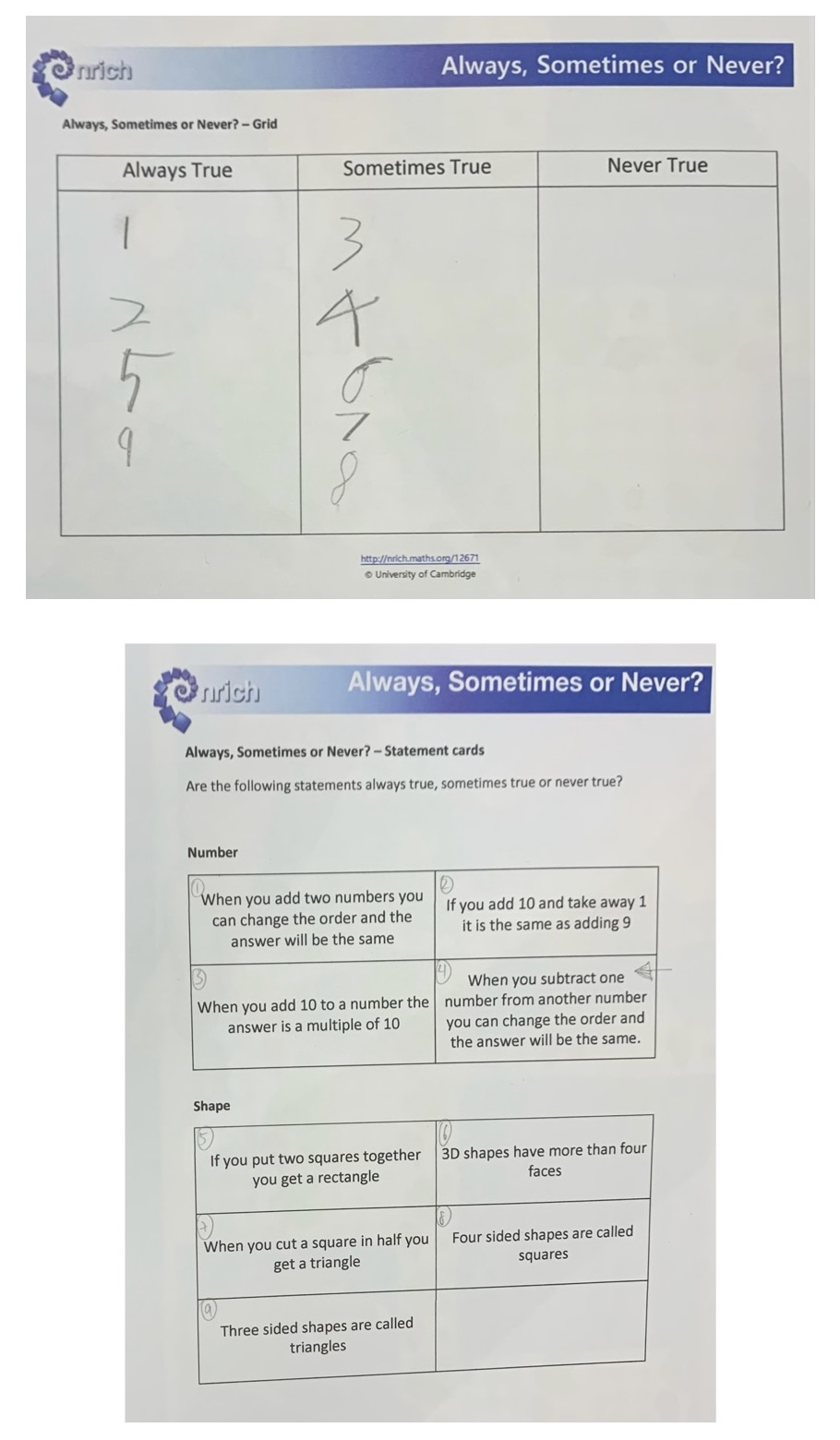Or search by topic
Number and algebra
Geometry and measure
Probability and statistics
Working mathematically
Advanced mathematics
For younger learners
Always, Sometimes or Never? KS1



- Problem
- Getting Started
- Student Solutions
- Teachers' Resources
We had a couple of solutions sent in explaining which of these statements are always, sometimes or never true.
Cormac and Elliot from Riverview Educate Together NS in Dublin, Ireland sent us their completed grid along with some explanations of why they chose to put each statement in each column:

Statement A is always true. I tried it for fractions and negative numbers and it was true each time.
Statement B is always true for straight sides. Statement B is always true because upside-down triangles are still triangles.
Statement C is true if you add ten to a multiple of ten, but not if you add ten to a number which is not a multiple of ten.
Good explanations! Harry from Copthorne Prep School in the UK sent in his completed grid and explained how he chose where to put each statement:

1. Always true. The order of the numbers doesn’t matter for addition. 4+5=9, same as 5+4=9.
2. Always true. 10-1=9, so adding ten and taking one away is the same as adding 9.
3. Sometimes true. Harry looked at some different numbers and found sometimes the answer might be a multiple of ten but not always. 3+10=13 which is not a multiple of ten but 10+10=20 which is. If the number you start with is a multiple of 10, then adding ten will give a multiple of ten.
4. Sometimes true. Harry only found this to be true if the number you were subtracting one number from itself, 5-5=0 is the same whichever way around you write it. But if the numbers in your sum are different then the order matters a lot and changing it will give you a different answer.
5. True
6. Sometimes true. Harry thought of a sphere which doesn’t have four faces.
7. Sometimes true. You only get a triangle if you cut the square diagonally from corner to corner. Otherwise you could get rectangles.
8. Sometimes true. There are other 4 sided shapes which are not square. Harry thought of rectangles, diamonds, kites and parallelograms!
9. True.
Lots of good ideas, Harry! I think the only statement that Harry and Cormac and Elliot didn't agree on was the fifth statement, 'If you put two squares together you get a rectangle.' I wonder if this is always true or only sometimes true? Can you draw a picture to show your ideas about this? Please email us with your thoughts.
You may also like
Biscuit Decorations
Andrew decorated 20 biscuits to take to a party. He lined them up and put icing on every second biscuit and different decorations on other biscuits. How many biscuits weren't decorated?

